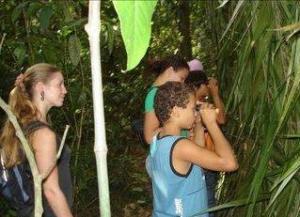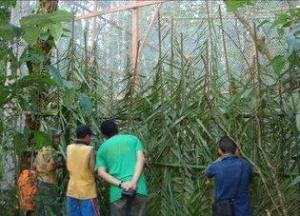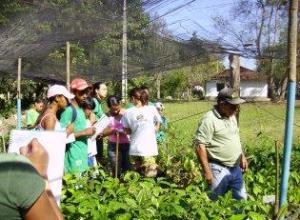Eleonora Camargo da Motta Pacheco
The objective of the Young Rangers Programme is to enhance the awareness of the interdependence between man and its natural surroundings focusing on the Mata Atlantica ecosystem.

The objective of the Young Rangers Programme is to enhance the awareness of the interdependence between man and its natural surroundings focusing on the Mata Atlantica ecosystem. Strengthening the concept of responsible stewardship within communities will lay a receptive basis for REGUA’s conservation work. Adolescent students that live in the communities situated in the high catchment of Guapiacu River form the target group.

The Young Rangers Programe has been going on for one and half years. Weekly workshops were held at the REGUA Conservation Centre on themes such as the Mata Atlantica ecology including flora and fauna. Introduction to the internet, history of Brazil and Cachoeiras de Macacu, presentation techniques, good manners, drama and capoeira (Brazilian martial arts) are taught as well. Field activities include participation in the School Visit Programme, day walks in REGUAs forests, collection of seeds, germinating seeds and tree planting (as the picture shows), visits to other conservation areas such as The Rio de Janeiro Primate Centre, The Biological Reserve of Poço das Antas (headquarters of Golden Lion Tamarin Association), participation in local seminars like the Cachoeiras de Macacu Zoning Plan and the Agenda 21 workshops.

The 2005 group of Young Rangers was formed of 8 pupils. The initial phase of the programme was supported by The Golden Lion Tamarin Association and Conservation International. The Brazilia Atlantic Rain Forest Trust BART supported the 2005 programme. The Young Rangers Programme will continue in 2006 with the support of the Rufford Foundation that will allow for the development of the programme with 20 pupils.